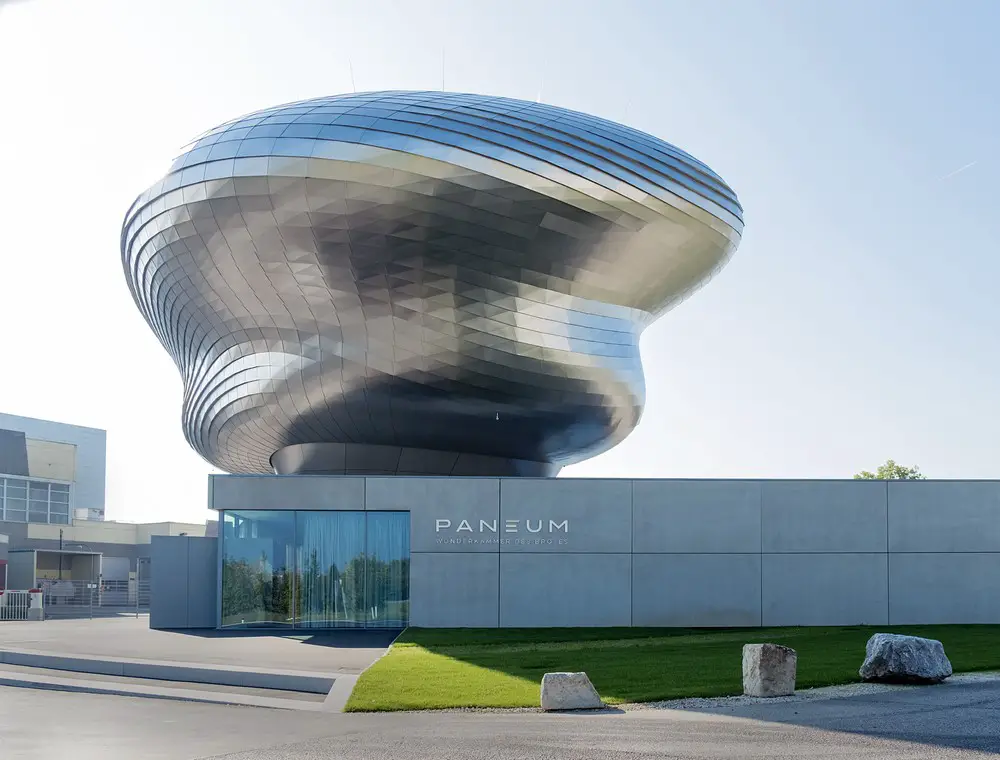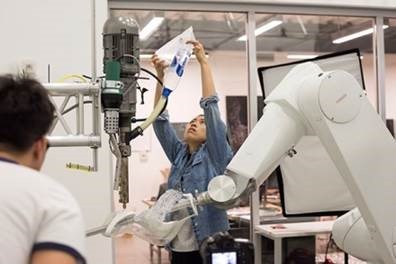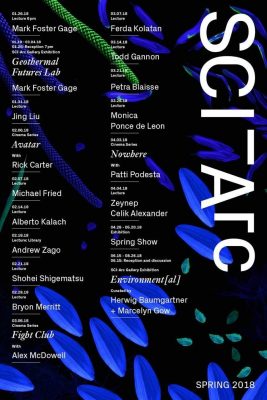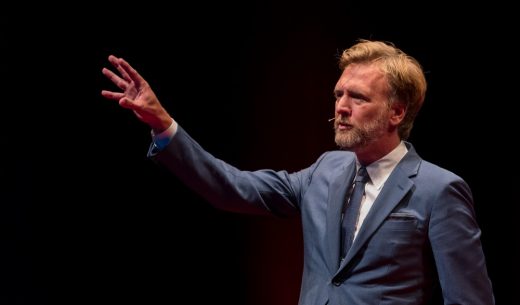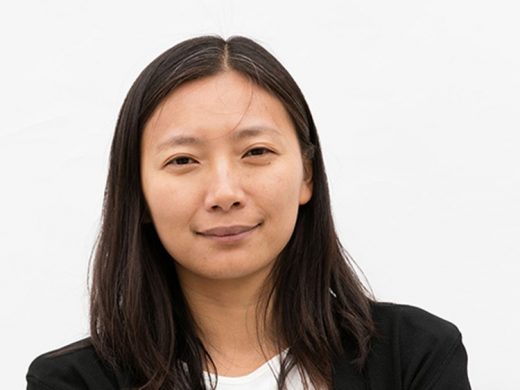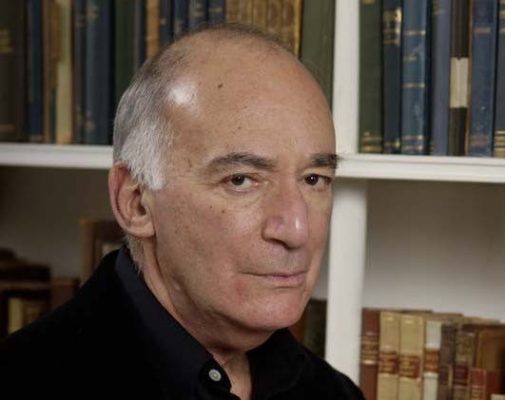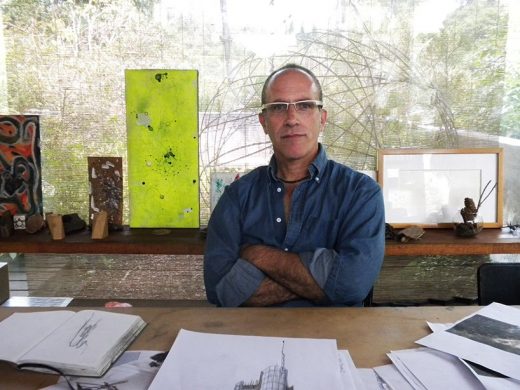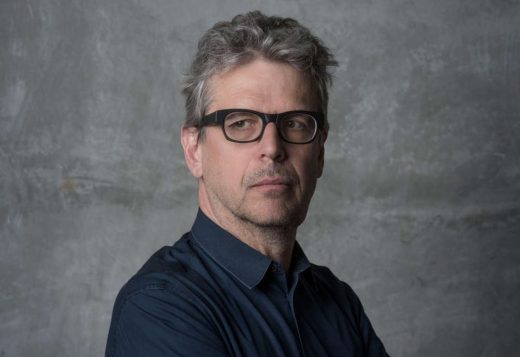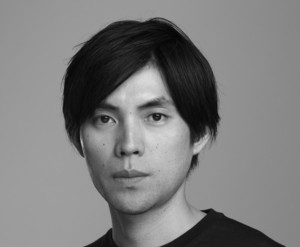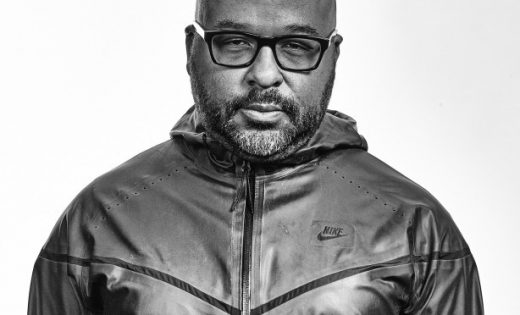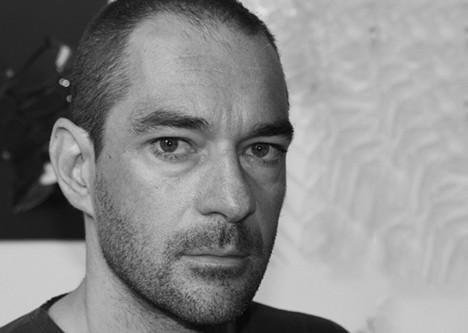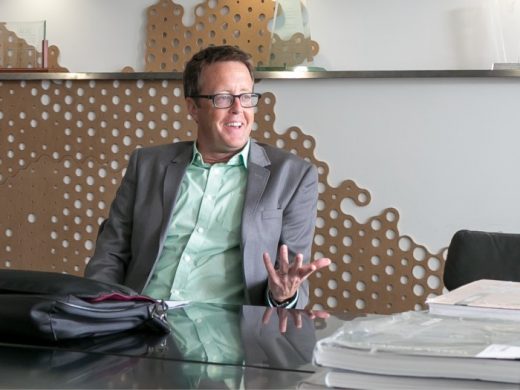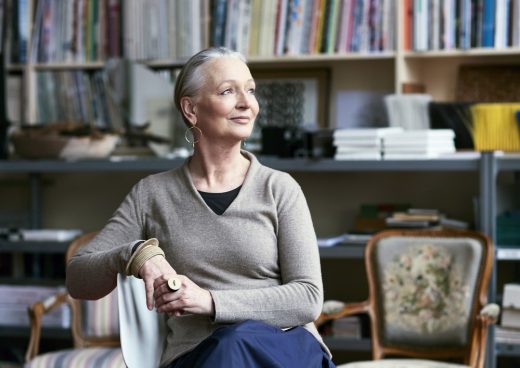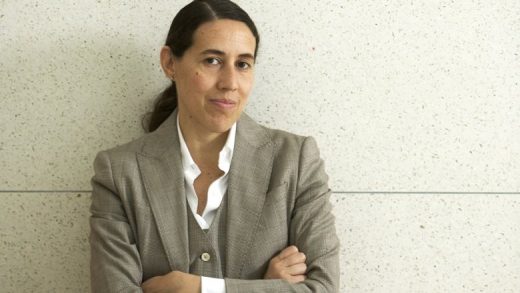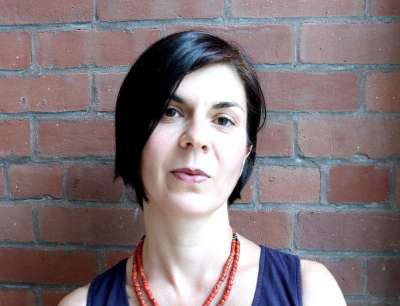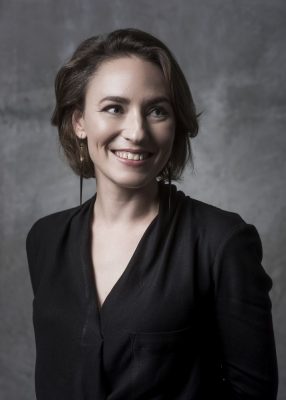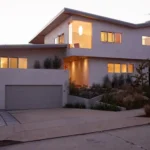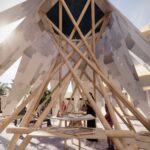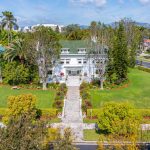SCI-Arc Architecture Events 2018, Lectures, CA Exhibitions, Los Angeles Architects News, Talks
SCI-Arc Events 2018, California
Southern California Institute of Architecture, California, USA: Exhibition + Events
May 26, 2018
Environment[al] – SCI-Arc Gallery Exhibition
SCI-Arc Presents Environment[al] Opening June 15 in the SCI-Arc Gallery
Environment[al]
Curated by Herwig Baumgartner and Marcelyn Gow
June 15 – August 26, 2018
June 15, 5pm: Exhibition Discussion
June 15, 7pm: Opening Reception
Los Angeles, CA (May 2018) – SCI-Arc is pleased to announce a new exhibition, Environment[al], opening June 15 in the SCI-Arc Gallery. Curated by Herwig Baumgartner and Marcelyn Gow, Environment[al] features the work of architects, designers and landscape architects including Izaskun Chinchilla (Izaskun Chinchilla Architects), Enric Ruiz Geli (Cloud 9), Carme Pinós (Estudio Carme Pinos), Wolf D. Prix (Coop Himmelb(l)au), Gilles Retsin, and Günther Vogt (Vogt Landschaftsarchitekten).
An exhibition discussion at 5pm kicks off the opening on June 15 and will feature panelists Herwig Baumgartner, Violeta Burckhardt, Izaskun Chinchilla, Vittoria Di Palma, Hernan Diaz Alonso, Enric Ruiz Geli, Marcelyn Gow, Gilles Restin, Marrikka Trotter and Günther Vogt.
PANEUM – Wunderkammer des Brotes, Austria, by Coop Himmelb(l)au:
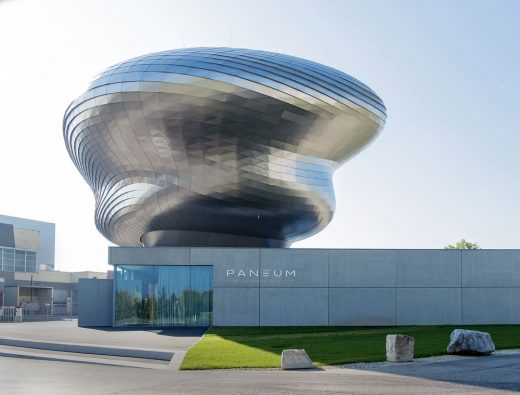
photo © Markus Pillhoferau
Environment[al], examines contemporary attitudes toward environment in a post-digital context. The capacity of constructed natures to produce admixtures of the natural and the synthetic is a focus. The changing character of environment in the context of technological innovation is considered through the projects in the exhibition.
Taking into account recent approaches to our understanding of environment and contemporary modes of ecological awareness, the exhibition considers the possibility of environments where qualities are fused with objects not normally associated with them. Sites, objects, and spaces become estranged to engender multiple authenticities and produce a fusion between architectural form and forms germane to constructed natures.
A multivalent implementation of environment, one that involves an agile negotiation with the changing character of the ecological in the context of technological change begins to surface, these environments produce invigorated forms of tangible architectural presence and performance.
Environment[al] transforms the SCI-Arc Gallery through the construction of a landscape/substrate that functions as the ground datum in the exhibition space. The landscape is designed as a facsimile of the soil conditions that are found in the Owens Valley [to the Northeast of Los Angeles where LA sources a significant amount of its water supply.] The substrate is punctuated by incisions containing oil/water and vegetation indigenous to Southern California. A sound map of the LA River is accessed through proximity sensors integrated within the exhibition landscape.
When gallery visitors interact with the plants, sounds recorded at different points along the river will become audible, conjuring the diverse environments of the river. The work of each of the exhibition participants is installed or projected into a series of concave receptacles within the landscape. The exhibition features both visions for the future of architecture as well as architectural applications in the context of environmental and climatic change.
SCI-Arc exhibitions and public programs are made possible in part by a grant from the City of Los Angeles, Department of Cultural Affairs.
This exhibition is generously supported by the Consulate General of Switzerland.
This exhibition is generously supported by the Spain USA Foundation.
Mar 17, 2018
SCI-Arc News in 2018
SCI-Arc receives official STEM designation
SCI-Arc is excited to announce that SCI-Arc’s B.Arch, M.Arch 1, M. Arch 2 and Master of Science degree programs have been designated as an approved field of study within the U.S. government’s official STEM fields list in Architectural and Building Sciences/Technology.
The STEM designation refers to the academic disciplines of Science, Technology, Engineering, and Mathematics. STEM designation will allow highly skilled international students who graduate from SCI-Arc in the above programs of study, to apply for the 24 month OPT extension and possibly remain in the U.S. for a maximum of 36 months on the F-1 visa.
Jan 10, 2018
SCI-Arc Announces Partnership with Nike
Los Angeles, CA (01/11/2018) – SCI-Arc is excited to announce a new and engaging partnership with Nike, Inc. Students from SCI-Arc will have an opportunity to travel to the Nike’s world headquarters in Beaverton, Oregon for a 5-day brainstorming session with members of the Nike design team. The session will focus on the intersection of design, architecture, technology and sustainability. SCI-Arc faculty include M. Casey Rehm, Rachael McCall, Benjamin H. Bratton and Vice Director John Enright with Director Hernan Diaz Alonso serving as advisor.
“SCI-Arc is more than a school of architecture. It is where art, science, and industry converge and new futures unfold,” says Diaz Alonso. “We’re thrilled for our students to have the opportunity to collaborate with the innovators at Nike.”
The workshop will take place in February, 2018
Jan 10, 2018
SCI-Arc Events in 2018
SCI-Arc Spring Lectures & Exhibitions
SCI-ARC ANNOUNCES SPRING 2018 PUBLIC LECTURES AND EXHIBITIONS
Los Angeles, CA (January 9, 2018) – SCI-Arc is pleased to announce its spring 2018 series of public events. SCI-Arc public lectures this coming spring will introduce speakers from a broad cross-section of today’s most exciting architects, artists and theorists including Michael Fried, Petra Blaisse, Byron Merritt and Jing Liu, among others.
The lecture series is complemented by several exhibitions including a collaboration between Mark Foster Gage and the Yale School of Architecture which will open a public-access, joint Geothermal Futures Lab demonstration in the SCI-Arc Gallery. Environment[al], an exhibition curated by Herwig Baumgartner and Marcelyn Gow, will examine contemporary attitudes towards the environment in a post-digital world.
Unless otherwise noted, admission to SCI-Arc-hosted public events and exhibitions is always free and open to the public with no reservation required.
January 26 Mark Foster Gage Lecture
January 26 Mark Foster Gage Exhibition Opening Reception
January 31 Jing Liu Lecture
February 7 Michael Fried Lecture
February 14 Alberto Kalach Lecture
February 19 Andrew Zago Lecture
February 21 Shohei Shigematsu Lecture
February 28 Byron Merritt Lecture
March 7 Ferda Kolatan Lecture
March 14 Todd Gannon Lecture
March 21 Petra Blaisse Lecture
March 28 Monica Ponce de León Lecture
April 4 Zeynep Çelik Alexander Lecture
April 28 Spring Show Exhibition Opening
June 15 Environment[al]: Exhibition Discussion + Opening Reception
Visit https://sciarc.edu/events/ for more information about upcoming lectures. All events begin at 7pm unless otherwise noted. Lectures take place in the W. M. Keck Lecture Hall and are broadcast on SCI-Arc’s Livestream page. Gallery opening receptions are held in the SCI-Arc Gallery.
LECTURES
January 26, 6pm in the W.M. Keck Lecture Hall Mark Foster Gage Lecture with an exhibition opening reception to follow in the SCI-Arc Gallery
Mark Foster Gage’s work places architectural design and the use of advanced technologies in dialogue with new directions in contemporary philosophy. Using each to inform the other, Mr. Gage has defined a career as both a practicing architect in New York City as well as a writer with a focus on aesthetic theory. Through fusing these interests, Gage has produced pioneering projects for clients including Intel Corporation, Nicola Formichetti, Lady Gaga, Google, Diesel, H&M, Samsung and Vice Media.
His work has been exhibited in institutions including the Museum of Modern Art, the Museum of the Art Institute of Chicago, and the Venice, Beijing and Prague Biennales. Recent projects have been featured in Vogue, Fast Company, USA Today, The New York Times, Wired, and featured on PBS, Fox and MTV. Mr. Gage is the Assistant Dean at the Yale School of Architecture where he has taught since 2001.
January 31, 7pm in the W.M. Keck Lecture Hall Jing Liu Lecture: Order, Edge, Aura
Jing Liu co-founded SO – IL with Florian Idenburg in 2008 with an emphasis on building cultural projects as an indispensable part of urban infrastructure. In projects such as the Manetti Shrem Museum of Art at the UC Davis and Kukje Gallery in Seoul, she has worked to deconstruct the boundary between institutional space and the public realm. Liu has led SO – IL to explore new fabrication methods and to confront the socio-political issues of urban space through mediums outside the conventional architectural platform.
A native of China, Liu received her education in China, Japan, the United Kingdom and the United States, concluding with a Master’s of Architecture from the Tulane School of Architecture in New Orleans. Liu is faculty member at The Graduate School of Architecture, Planning and Preservation at Columbia University, and advises the Master’s thesis at Parsons, The New School of Design. Liu extends her interest in the future of cities by being an active board member at Van Alen Institute. Order, Edge, Aura are three conceptual themes that encapsulate an attitude towards the design and realization of architecture in a time of increased instability.
February 7, 7pm in the W.M. Keck Lecture Hall Michael Fried Lecture: Struth Channels Kant: The Technology Photographs
Michael Fried, J. R. Herbert Boone Professor of Humanities Emeritus at Johns Hopkins University, is a poet, art critic, art historian, and literary critic/historian. His early art criticism, culminating in the 1967 essay “Art and Objecthood,” remains central to contemporary discussions of modern art. He is also the author of books on 18th- and 19th-century French painting from Chardin to Manet, on Thomas Eakins, on Adolph Menzel, on Caravaggio and a number of his followers, on recent photography and video, on Flaubert’s novels Madame Bovary and Salammbô.
Later this spring a new book by him, What Was Literary Impressionism?, will be published by Harvard University Press. Starting nearly ten years ago, Thomas Strutch has been making impressive photographs of technological installations of various kinds. The photographs are beautiful and challenging, offering a kind of privileged glimpse of devices and structures that typically are not available to be seen. In this lecture, Michael Fried offers a surprising reading of those photographs in relation to Immanuel Kant’s great text on aesthetics, The Critique of Judgment.
February 14, 7pm in the W.M. Keck Lecture Hall Alberto Kalach Lecture: The neo-Vitruvians
Alberto Kalach is an architect working in Mexico City. His concern about the emerging problems of the vast city is often reflected in his work: from the $5,000.00 USD “minimal house”, to his housing developments, to the largest project ever conceived for Mexico City, México Ciudad Futura (Return to the City of Lakes), which embraces the city as a whole, and aims to restore at least some of its remarkable hydrology, informed by a thorough study of the valley’s geography. Mr. Kalach was born in Mexico City on January 26, 1960. He studied architecture at the Universidad Iberoamericana in Mexico City from 1977 to 1981, and at Cornell University in Ithaca, New York, from 1983 to 1985.
February 19, 7pm in the Library Andrew Zago Sabbatical Times
Andrew Zago, AIA is principal of Zago Architecture. He received a Bachelor of Fine Arts from the University of Michigan and a Master of Architecture from Harvard University. From 2003–2007, he was the founding director of the Master of Architecture program at the City College of New York.
He is also a Clinical Professor at the University of Illinois at Chicago and has taught at Cornell University, the University of Michigan, UCLA and the Ohio State University. Zago is a fellow of the American Academy in Rome and a member of the National Register of Peer Professionals of the General Services Administration in Washington.
He is a recipient of both an Academy Award in Architecture from the American Academy of Arts and Letters and a Fellowship Grant from the United States Artists organization. Notable projects include the Downtown Los Angeles offices of Arup, the Museum of Contemporary Art Detroit, and a design studio facility for Cornell University’s Sibley School of Mechanical and Aerospace Engineering. His talk will focus on recent research and projects conducted during his sabbatical from SCI-Arc.
February 21, 7pm in the Library Shohei Shigematsu Lecture
Shohei Shigematsu joined OMA in 1998 and became a partner in 2008. He has led the office in New York since 2006. Sho’s designs for cultural venues include the Quebec National Beaux Arts Museum and the Faena Arts Center in Miami Beach, as well as direct collaborations with artists, including Cai Guo Qiang, Marina Abramovic and Kanye West. Sho is currently designing a number of luxury, high rise towers in San Francisco, New York, and Miami, as well as a mixed-use complex in Santa Monica.
His engagement with urban conditions around the world include a new civic center in Bogota, Colombia; a post-Hurricane Sandy, urban water strategy for New Jersey; and a food hub in Louisville, Kentucky. He is a design critic at the Harvard Graduate School of Design, where he is conducting a research studio entitled Alimentary Design, investigating the intersection of food, architecture and urbanism.
February 28, 7pm in W.M. Keck Lecture Hall Byron Merritt Lecture
In Bryon Merritt’s role as Senior Creative Director at Nike, he drives how the brand comes to life across all consumer touch points be that retail, digital, and brand experiences in Nike’s biggest geography. The team he leads focuses on driving innovation around how the products Nike makes, the services they create around those products, the places where consumers interact with those products and services (both physical and digital) and how they communicate all of this comes together in a seamless and considered experience for consumers.
His work fuses marketing, design and innovation and crosses the creative boundaries of digital & physical, communication design, service design and space. At Nike, Byron drives creative around the launch of the Nike+ Fuelband and was a part of the team creating the product experience.
Additionally, Byron has led the development of many Nike firsts. He was creative director for Nike’s first video game Nike+ Kinect Training designed for the Xbox Kinect platform as well as new to Nike, customization experiences. Prior to Nike, Byron worked at what’s been considered to be the world’s most innovative design company IDEO in San Francisco. Byron earned a Masters in Architecture at SCI-Arc and currently lives in Portland, Oregon.
March 7, 7pm in the W.M. Keck Lecture Hall Ferda Kolatan Lecture: In Pursuit of the Allusive Object
Ferda Kolatan is the founding director of SU11 Architecture+Design in New York City and an Associate Professor of Practice at the Graduate School of Architecture at PennDesign. He received his Architectural Diploma with distinction from the RWTH Aachen and graduated from the MsAAD program at Columbia University with the “Honor Award for Excellence in Design” and the “Memorial Prize”.
Ferda’s practice su11, which he cofounded with Erich Schoenenberger in 1999 has been published widely nationally and internationally, and participated in exhibitions at MoMA, Walker Art Center, Vitra Design Museum, the Beijing and Istanbul Biennales, Archilab, Artists Space, the SCI-Arc Gallery and others. Ferda’s teaching resume includes Columbia University, Cornell University, Pratt Institute, RPI, and SCI-Arc. His UPenn design studio was selected to exhibit at the Venice Architectural Biennale in 2016 and received the AIA ARCHITECT Studio Prize in 2017. Ferda has published many essays and co-authored the book Meander: Variegating Architecture.
The pursuit of the allusive object describes his approach to architecture over the past few years. This approach privileges an architectural aesthetic with ambiguous characteristics as a way to address larger cultural trends that follow on the heels of the advent of digital media.
Questions concerning nature and technology in the era of the Anthropocene confront us with the proliferation of peculiar hybrids, which require new forms of architectural thinking and making. This lecture will map this interest through work produced in his practice as well as through his academic teaching.
March 14, 7pm in the W.M. Keck Lecture Hall Todd Gannon Lecture: Reyner Banham and the Paradoxes of High Tech
Todd Gannon is a Professor and Head of the Architecture Section at The Ohio State University’s Knowlton School. His most recent book is Reyner Banham and the Paradoxes of High Tech. His other books include The Light Construction Reader (2002), Et in Suburbia Ego: José Oubrerie’s Miller House (2013) and monographs on the work of Morphosis, Bernard Tschumi, UN Studio, Steven Holl, Mack Scogin/Merrill Elam, Zaha Hadid, Peter Eisenman, and Eric Owen Moss.
His essays have appeared in The Routledge Companion for Architecture Design and Practice (2015), The SAGE Handbook for Architectural Theory (2012), and in periodicals including Log, The Architect’s Newspaper, and Offramp. In collaboration with Ewan Branda and Andrew Zago, he curated the 2013 exhibition A Confederacy of Heretics. His work has been recognized and supported by the Getty Foundation, the Graham Foundation, the National Endowment for the Arts, the American Institute of Architects, the City of Los Angeles Department of Cultural Affairs, The Ohio State University, and UCLA.
Todd Gannon will discuss his most recent book, Reyner Banham and the Paradoxes of High Tech, which reassesses one of the most influential voices in twentieth-century architectural history through a detailed examination of Banham’s writing on High Tech architecture and its immediate antecedents. Taking as a guide Banham’s habit of structuring his writings around dialectical tensions, Gannon sheds new light on Banham’s early engagement with the New Brutalism of Alison and Peter Smithson.
He also focuses his measured enthusiasm for the “clip-on” approach developed by Cedric Price and the Archigram group, his advocacy of “well-tempered environments” fostered by integrated mechanical and electrical systems, and his late-career assessments of High Tech practitioners such as Norman Foster, Richard Rogers, and Renzo Piano. Gannon will devote significant attention to Banham’s late work, including fresh archival materials related to Making Architecture: The Paradoxes of High Tech, the manuscript he left unfinished at his death in 1988.
March 21, 7pm in the W.M. Keck Lecture Hall Petra Blaisse Lecture
Petra Blaisse started her career in 1978 at the Stedelijk Museum in Amsterdam, in the Department of Applied Arts. 1986 onwards, she worked as freelance exhibition designer and won distinction for her installations of architectural works. Gradually her focus shifted to the use of textiles, light and finishes in interior space and, at the same time, to the design of gardens and landscapes. In 1991, she founded Inside Outside.
The studio worked in a multitude of creative areas, including textile, landscape and exhibition design. From 1999 Blaisse invited specialist of various disciplines to work with her and currently the team consists of about ten people of different professions and nationalities. Inside Outside works internationally, on projects of increasing technical sophistication, ambition and scale.
Throughout the years, Inside Outside has collaborated with various architects and designers. Blaisse has lectured and taught extensively in Europe, Asia and the United States. Her work has been included in numerous design and architecture exhibits internationally. In 2000 a solo exhibition on Inside Outside’s work was organized at the Storefront for Art and Architecture in Soho, New York, for which Dutch graphic designer Irma Boom created Blaisse’s first publication, the Movements, 25% catalogue.
The first monograph on the work of Petra Blaisse / Inside Outside designed by Irma Boom, has been published February 2007 by NAi Publishers and was reprinted by The Monacelli Press, a division of Random House Inc. New York, October 2009. A number of public and private buildings in which Inside Outside implemented interior and landscape interventions brought the work of Inside Outside to the attention of a broader public.
March 28, 7pm in the W.M. Keck Lecture Hall Monica Ponce de León Lecture
Mónica Ponce de León, AIA is Dean of the School of Architecture at Princeton University. A National Design Award winner, Ponce de León is widely recognized as a pioneer in the application of robotic technology to building fabrication and architecture education. Her interdisciplinary practice, MPdL Studio, has offices in New York, Boston, and Ann Arbor, MI. Ponce de León previously served as Dean of the Taubman College of Architecture and Urban Planning at the University of Michigan (2008–2015) and as Professor at the Graduate School of Design at Harvard University (1996–2008).
MPdL Studio’s work ranges in scale from furniture to architecture, urban design and infrastructure, with a focus on design integration, craft, detailing, and precision. The studio seizes on the challenges unique to each project— the peculiarities of a site, requirements of program, and cultural specificity—as the catalysts for transformation.
At the macro-scale the studio draws from the multidisciplinary forces that form the relevant context of every project. Program and experience drive our understanding and shaping of space. At the micro–scale, an investigation of the potentials of materials and construction techniques is the foundation for every design.
Much of the studio’s research is dedicated to an exploration of how to improve on contemporary modes of construction, investigating both industry standards as well as evolving technologies derived from digital manufacturing processes.
April 4, 7pm in the W.M. Keck Lecture Hall Zeynep Çelik Alexander Lecture: Drawing Circles: A History of Design Education
Zeynep Çelik Alexander is an architectural historian whose work focuses on the history of architectural modernism since the Enlightenment. After being trained as an architect at Istanbul Technical University and Harvard Graduate School of Design, she received her Ph.D. from the History, Theory, and Criticism Program at M.I.T. Alexander is the author of Kinaesthetic Knowing: Aesthetics, Epistemology, Modern Design (Chicago and London: University of Chicago Press, 2017) and has published in journals including Harvard Design Magazine, Log, e-flux, Grey Room, Journal of Design History, and Centropa.
A second research project, codirected with John J. May and funded by SSHRC and exploring the histories of technologies that have come to dominate contemporary design disciplines, is forthcoming as an edited volume. Her current research project explores architectures of bureaucracy from the Kew Herbarium to the Larkin Administration Building. Alexander is a member of Aggregate Architectural History Collaborative and an editor of the journal Grey Room.
EXHIBITIONS
January 19 – March 4 in the SCI-Arc Gallery Mark Foster Gage: Geothermal Futures Lab Friday, January 26, 7pm: Exhibition Opening
The Yale University School of Architecture and SCI-Arc are pleased to announce the opening of the publicaccess, joint Geothermal Futures Lab demonstration in Los Angeles California. The laboratory demonstrates the use of visible-light Q-switched Nd:YAG lasers that penetrate deep into the earth and are capable of generating up to nineteen times more power than existing geothermal energy extraction techniques.
Visitors can observe this prototype process live as it showcases the technologies that will allow California to increase its reliance on sustainable geothermal sources of power from its existing state of 6% today to 68% by 2022. †
† None of the above scientific information is true, although the exhibition and collaboration are real. Please visit us at the SCI_Arc gallery to learn more and see the non-functioning, but incredible giant gold prototype machine and its associated components. For additional information visit the gallery in person or learn more about this para-fictional project at: www.magneticfuturescom.
April 28 – May 20 2017 Throughout School Spring Show Saturday, April 28, 7pm: Ticketed Opening Reception
SCI-Arc’s twelfth annual Spring Show follows the Undergraduate Thesis and features student work from all school programs. Undergraduate, Graduate and Postgraduate design studio projects, as well as coursework from the Applied, Cultural and Visual Studies seminars, are exhibited schoolwide.
June 15 – August 26 in the SCI-Arc Gallery Environment[al]: Curated by Herwig Baumgartner and Marcelyn Gow Friday, June 15, 5pm: Exhibition Discussion Friday, June 15, 7pm: Opening Reception
Environment[al] is a group exhibition with the work of architects, designers and landscape architects including Wolf Prix [Coop Himmelb(l)au], Enric Ruiz Geli [Cloud9], Izaskun Chinchilla [Izaskun Chinchilla Architects], Carme Pinós [Estudio Carme Pinós], Gilles Retsin, and Günther Vogt [Vogt Landschaftsarchitekten]. Environment[al] transforms the SCI-Arc Gallery through the construction of a landscape/substrate that functions as the ground datum in the exhibition space.
The landscape is designed as a facsimile of the soil conditions that are found in the Owens Valley (to the East of Los Angeles where LA sources the majority of its water supply). The substrate is punctuated by incisions containing oil/water and vegetation indigenous to Southern California.
Plants living within the substrate will be cultivated by proximity sensor driven irrigation. When gallery visitors interact with the plants, the irrigation will transform the plant growth over time, altering the presence and density of the vegetation. The work of each of the exhibition participants – models, objects, projections or environmental ‘equipment’ designed for the exhibition – will be installed in a series of concave receptacles within the landscape.
The exhibition features both visions for the future of architecture as well as architectural applications in the context of environmental and climatic change.
— Public Programs
Parking and admission are free. No reservations are required. Events are broadcast live online on SCI-Arc’s Livestream page.
SCI-Arc Public Programs are subject to change beyond our control. For the most current information, please visit www.sciarc.edu/ or call 213-613-2200.
Parking and Hours The entrance to SCI-Arc’s parking lot is at 350 Merrick Street, Los Angeles, CA 90013, between Traction Avenue and 4th Street in Los Angeles. The SCI-Arc Gallery is open daily from 10am–6pm; the Library Gallery is open daily from 12pm-6pm.
Dec 13, 2017
SCI-Arc Announces Marrikka Trotter as History + Theory Coordinator
Los Angeles, CA (December 13, 2017) – SCI-Arc Director Hernan Diaz Alonso is pleased to announce the appointment of Marrikka Trotter as full-time faculty member and Coordinator of History + Theory.
Trotter is an architectural historian and theorist whose research examines the intersections between geology, architecture, and landscape. She is co-editor of the contemporary architectural theory collections Architecture at the Edge of Everything Else and Architecture is All Over, and her writing has appeared in publications such as Harvard Design Magazine, Log, and AA Files. She received her PhD from Harvard University, and her work has received funding from the Paul Mellon Centre for Studies in British Art, the Graham Foundation, the Canadian Centre for Architecture, and Sir John Soane’s Museum.
Location: 960 E 3rd St, Los Angeles, CA 90013, USA
SCI-Arc News Archive
SCI-Arc Los Angeles Events 2016
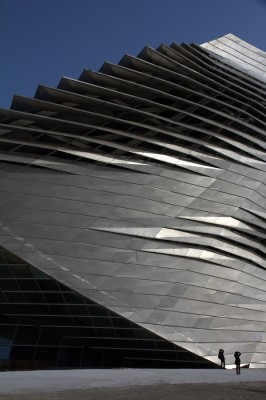
photo from architects via SCI-ARC
SCI-Arc Shanghai News – Dec 1, 2015
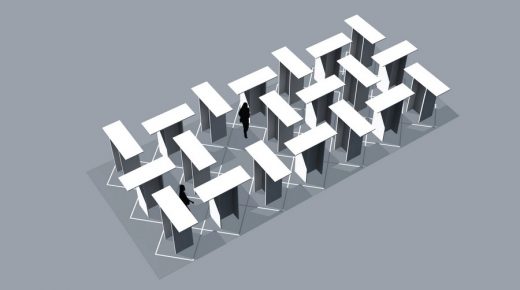
Architects associated with SCI-Arc
Frank Gehry, Architect, Gehry Partners, LLP, Los Angeles
SCI-Arc Mexico City – Feb 2016
SCI Arc Architecture News – 2010-11
SCI Arc Architecture Lectures – 2009
Drawing Show Exhibition at A+D Museum Los Angeles
SCI-Arc Exhibition : L.A. in Wien / Wien in L.A.
Los Angeles Architecture
Los Angeles Architecture Designs
SCI-Arc Atelier Hitoshi Abe Exhibition
SCI-Arc Competition : Contest 2010
SCI-Arc Distinguished Alumni Awards
Comments / photos for the SCI-Arc Events 2018 Lectures + Exhibitions – Los Angeles Architecture Event page welcome
Website: www.sciarc.edu

